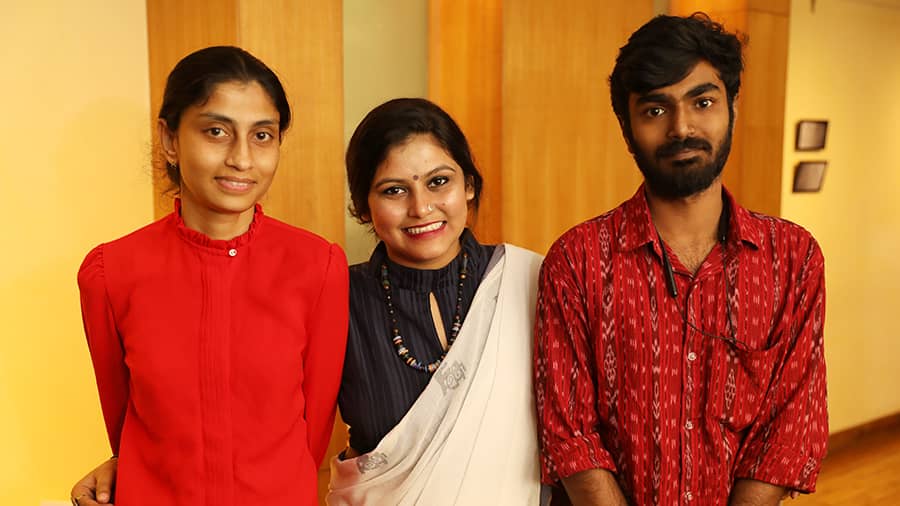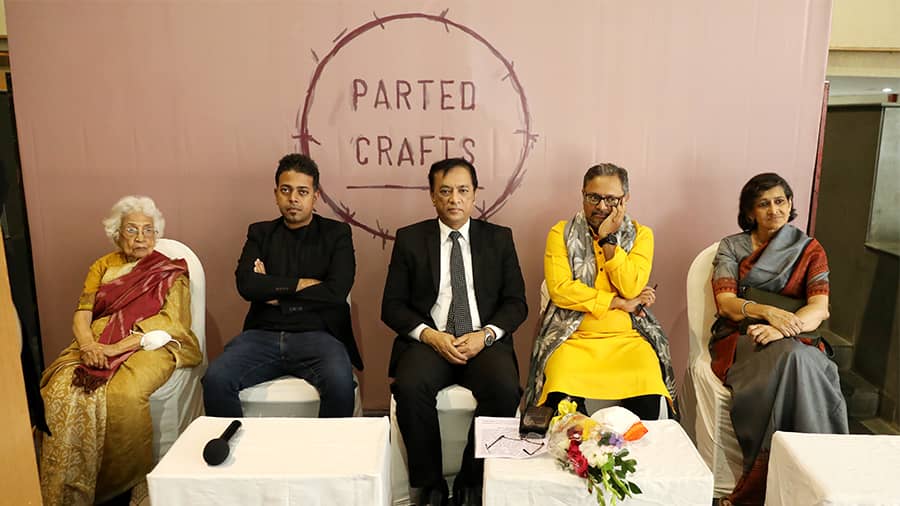An exhibition held at ICCR recently told the story of the impact of Partition on Bengal’s handicrafts and craft.
‘Parted Crafts', as the exhibition was called, was organised by Archi Banerjee, a Mead Fellowship Awardee from the University of the Arts London, and supported by Kolkata Partition Museum as the outreach partner.
“From this exhibition I would want people to understand how Partition is a continuing discussion and something that we need to understand from different dimensions. We have always seen Partition from the perspective of pain and grief. But there are so many other experiences that different communities from different social strata have gone through. This exhibition is only an introduction to the year-long research that has gone into it. It feels surreal to see the exhibition come to life,” Banerjee said.
The exhibition, which has been designed and executed by visual artist Uma Ray, portrays crafts from both sides of the border and offered a glimpse into the lives of conch-shell carvers, Tangail weavers, Banarasi weavers, shitalpati people, and shola-pith artisans.

(L-R) Uma Ray, Archi Banerjee and Ritam Ghosal at the event Arijit Sen
It also offers an audio-visual experience through various mini-documentaries focusing on different artisanal communities. An audio-visual production, directed by Ritam Gosal, a cinematographer from Burdwan, highlighted Archi’s journey of curating the research work.
The special draw of the exhibition, for many, were the excellent specimens of craftsmanship of Bangladeshi artisans. Ruby Palchoudhuri said she had “always loved crafts from Bangladesh” because of their intricate designs and the skilful workmanship that goes behind them.
Tapati Guha-Thakurta, honorary professor, CSSSC and Trustee, KPM Trust, said the exhibition was rich in potential. “We always think of exhibitions in terms of the visual splendour of the crafts but when you try and construct a history of the craft it becomes difficult. However, Archi and her team have done a wonderful job. Uma Ray, the designer of the exhibition, has outdone herself in selecting the pieces to be displayed because an exhibition cannot be crowded with too many stories,” she said.
For Rituparna Roy, managing trustee and founder of the Kolkata Partition Museum, the association with the project has been a very pleasant one. “When Archi approached us we just lapped up the proposal because it totally aligns with the work that we, at the Kolkata Partition Museum, are doing. We are trying to change the discourse of Partition and highlight the different stories and aspects of it . The interesting thing about ‘Parted Crafts' is that it focuses attention on how livelihoods were affected, especially that of the craft community which is an area that hasn’t been much worked on. Whatever has been done in the sphere of academia has not been out in the open. This exhibition will take it to a wider audience.”
This focus on subaltern narratives, along with the need to incorporate craft in modern existence, has led Aurgho Jyoti, founder and creative director of Architecture Urbanism Research and head of the design team at Virtual Kolkata Partition Museum, to be associated with the exhibition.
“Much of what Archi has curated speaks of the subaltern perspective because the crafts are not elitist professions. Our Kolkata Partition Museum project also has Partition art; modern Partition art, contemporary Partition art and children's Partition art that have been curated into a gallery. We are in the process of compiling the website and we will start incorporating the Parted Crafts exhibits and it will not only include the things that you see here but also other things which formed a part of Archi’s extensive research,” he said.
The exhibition at Bengal Gallery of ICCR was inaugurated by Raizul Islam, counsellor (education and sports), Deputy High Commission for Bangladesh; Ruby Palchoudhuri, president Emeritus, Craft Council of West Bengal; and Debanjan Chakrabarti, director East and North-East India, British Council.

(L-R) Ruby Palchoudhuri, Aurgho Jyoti, Riazul Islam, Debanjan Chakrabarti, Tapati Guha-Thakurta Arijit Sen
“The aim was to understand the impact of the Partition of Bengal on the handicraft cultures and craft communities of Bengal. The goal of the exhibition is to narrate the history of Bengal crafts of pre-Partition era to the Partition and rehabilitation phase right through to their current forms. The similarities and differences of the same craft being practised on both sides of the border and their socio-cultural context and differences,” said Riazul Islam.
